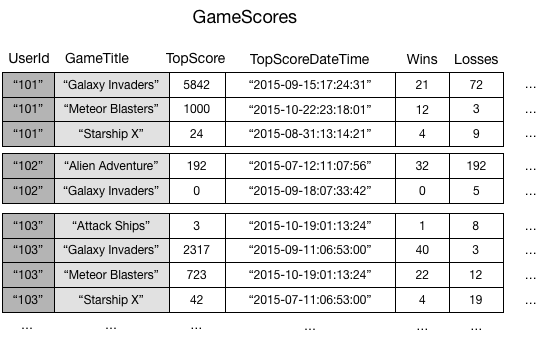How does Dyanmo DB uses GSI(concept) for querying and reducing read latency?
Global Secondary Indexes (GSI) in DynamoDB can help reduce read latency, but their effectiveness depends on how and why you're using them.
GSIs enable you to query data using an alternate key (other than the primary key), but they are not a direct solution for speeding up all types of reads. Here's a detailed breakdown:
1. How GSIs Work
A Global Secondary Index (GSI) is essentially a copy of your table with a different partition key (and optionally, a sort key). GSIs:
Store a subset of attributes from the main table (projected attributes).
Allow queries based on the GSI's partition key and sort key.
The data in the GSI is automatically kept up-to-date by DynamoDB as you update the main table.
2. When GSIs Reduce Read Latency
GSIs can reduce read latency in the following scenarios:
a. Querying Without the Primary Key
If your read patterns involve querying the table by attributes other than the primary key, using a GSI is much faster than performing a full table scan. For example:
If your main table's partition key is
UserIDbut you need to query byEmail, a GSI withEmailas the partition key can enable direct lookups rather than scanning the entire table.
b. Reducing Data Scanned in Queries
GSIs allow you to project only the attributes needed for the query, reducing the amount of data read and transferred:
For example, if you frequently query a large table but only need a few attributes, you can project just those attributes into the GSI, improving performance and reducing latency.
c. Handling High Read Traffic
If your table experiences high read traffic concentrated on certain partitions (a "hot partition"), a GSI can help distribute the workload:
Reads on the GSI are distributed across partitions independently of the base table, which can alleviate bottlenecks.
d. Pre-Sorting Data
If you query by ranges of data (e.g., all orders within a date range), a GSI with a suitable sort key (e.g., OrderDate) can optimize the query and improve read efficiency.
3. When GSIs May Not Reduce Latency
GSIs won't always improve latency. Here are cases where they may not help:
Read Operations on the Primary Key: If your read queries already use the table's primary key, a GSI provides no additional benefit.
Frequent Updates to GSI Keys: Writes to the main table that affect attributes used in the GSI (partition key or sort key) may introduce write amplification and increase overall system latency.
Inefficient Queries on the GSI: If your GSI queries frequently scan a large number of items or partitions, latency could remain high.
4. How to Optimize GSI Usage
To maximize the latency benefits of GSIs, consider the following strategies:
a. Choose Keys Strategically
Select a partition key and sort key for the GSI that align with your application's query patterns. For example:
If your primary table is keyed by
UserID, but you often query byEmail, create a GSI withEmailas the partition key.
b. Project Only Needed Attributes
Use projection to include only the attributes you need in the GSI. This reduces the size of the index and improves query performance.
c. Monitor and Optimize Index Usage
Use Amazon CloudWatch metrics to monitor GSI performance and tune capacity provisioning for the GSI separately from the base table.
d. Avoid Hot Partitions
If you use a GSI for high-traffic queries, ensure the partition key is sufficiently diverse to avoid hot partitions. For example:
Avoid using overly broad keys like
Categoryif the categories are unevenly distributed.
5. Trade-offs of Using GSIs
Write Amplification: Every write to the base table that affects a GSI key will also update the GSI, leading to higher write costs and slightly increased latency for writes.
Additional Storage: GSIs consume additional storage for the copied and projected attributes.
6. Example Use Case
Scenario:
You have a table of orders with:
Partition Key:
CustomerIDSort Key:
OrderID
You frequently query by OrderDate to find recent orders.
Solution:
Create a GSI with:
Partition Key:
OrderDateSort Key:
OrderID
Benefits:
Instead of scanning the entire table for recent orders, the query can directly target partitions in the GSI, significantly reducing latency.
Conclusion
GSIs can reduce read latency when:
You need to query by attributes other than the primary key.
You optimize GSI design with appropriate partition keys, sort keys, and projections.
You distribute query traffic effectively across partitions.
However, for queries already using the primary key or if your read patterns are well-supported by the base table design, GSIs won’t improve latency significantly.
source:- aws


